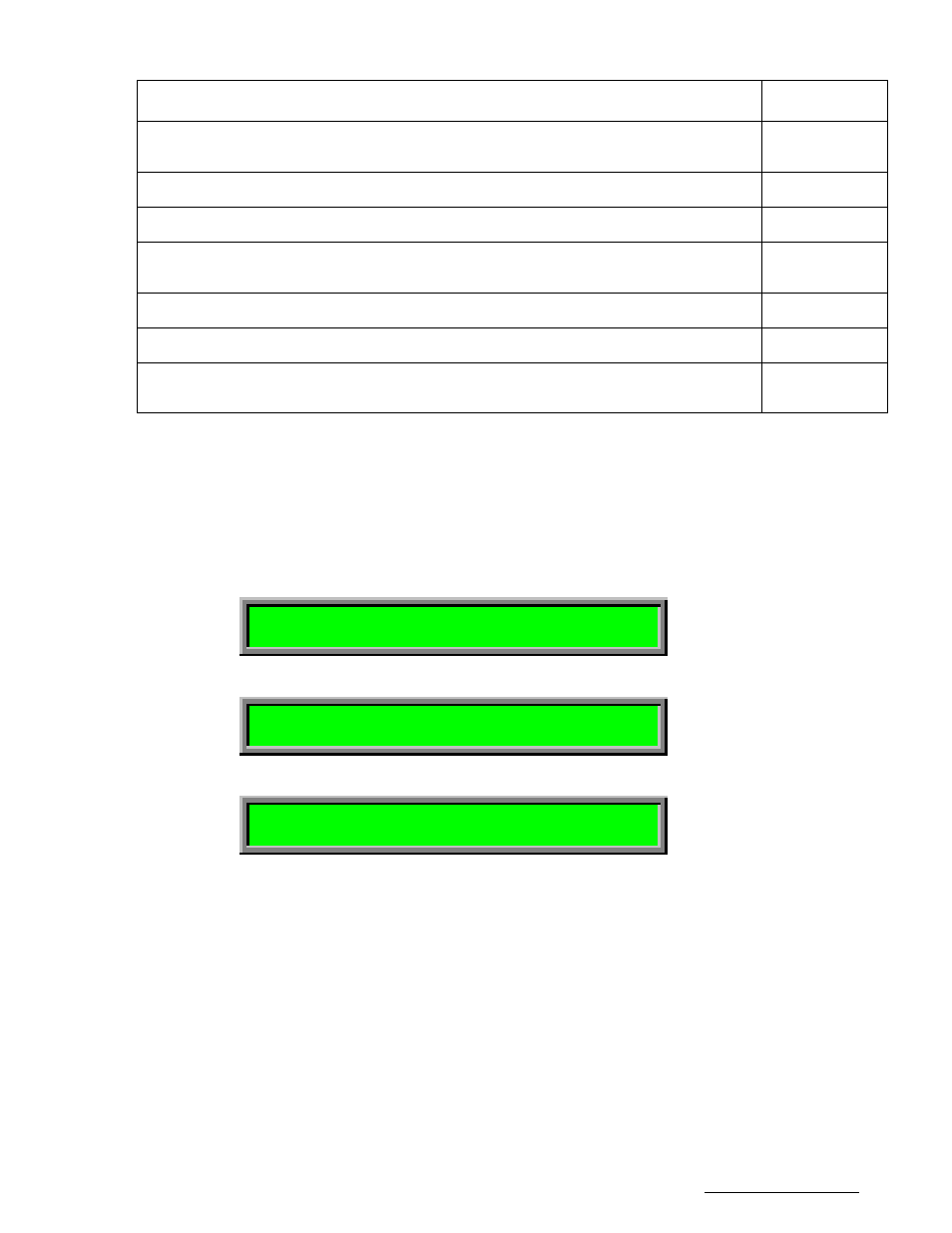Sensor type and reverse direction – Research Concepts RC2500 User Manual
Page 176

RC2500 Antenna Controller
Appendix T Version 1.15 Support on Special Features
169
Research Concepts, Inc. • 5420 Martindale Road • Shawnee, Kansas • 66218-9680 • USA
www.researchconcepts.com
Description
Andrew P/N
Dual speed resolver, 4 pole, size 11, (Harowe Server p/n 11BRCX-310-M-85V, Clifton
Precision p/n 11-BHM-19F/F776)
300327
Dual speed az/el resolver kit, 3.6 meter to 4.6 meter antennas
RESK5-300
Dual speed az/el resolver kit, 5.6 meter to 9.3 meter antennas
RESK9-300
Single speed resolver, 2 pole, size 11, (Harowe Server p/n 11BRCX-310-R-85V, Clifton
Precision p/n 11-BHW-46TK/F561 and 11-BHW-46TK/F817)
208349
Single speed az/el resolver kit, 3.6 meter to 4.6 meter antennas
RESK5
Single speed az/el resolver kit, 5.6 meter to 9.3 meter antennas
RESK9
Polarization resolver kit, 2:1 gear ratio signal, used on 9.3 meter, 9.1 meter, 7.6 meter,
and 7.3 meter antennas
PK9DR
A resolver’s input shaft has continuous rotation, there are no built-in stops. At one point in the resolver’s
range of travel the electrical output will transition from 359.99 to 0.0 degrees. This is sometime referred
to as the resolver’s rollover point. The RC2500 requires that the rollover point not occur within the
antenna’s range of travel. The APC 300 does not have this requirement, the resolver rollover point can
occur within the antenna’s range of travel. The APC300 can compensate for this. When retrofitting an
APC300 installation with an RC2500 the resolver’s may have to be adjusted.
Manual Changes
5.8.1 Sensor Type and Reverse Direction
AZ SENSOR 0-FOR 1:1, 1-REV 1:1 : CONFIG
2-FOR 2:1, 3-REV 2:1 ENT,BKSP,SCRLL ^v
EL SENSOR 0-FOR 1:1, 1-REV 1:1 : CONFIG
2-FOR 2:1, 3-REV 2:1 ENT,BKSP,SCRLL ^v
PL SENSOR 0-FOR 1:1, 1-REV 1:1 : CONFIG
2-FOR 2:1, 3-REV 2:1 ENT,BKSP,SCRLL ^v
The RC2500 is designed to interface with resolver type sensors. A resolver consists of 3 windings: a
primary winding and two sense windings. The primary winding is excited by an AC signal which induces
a voltage into the sense windings. The amplitude and phase of the voltage induced in the two sense
windings is dependent on the position of the resolver input shaft. A resolver to digital converter (rdc)
takes as its input the stimulus signal applied to the resolver primary winding and the two signals induced
on the sense windings. The output of the rdc is a 16 bit digital word that is proportional to the resolver
input shaft’s angle of rotation (relative to a reference point). This digital word is read by the antenna
controller’s microprocessor.
Most antenna’s employ single speed resolvers. With a single speed resolver 360 degrees of physical
rotation of the input shaft results in 360 degrees of electrical rotation. Some Andrew antenna’s
configured to interface to the Andrew APC300 antenna controller are equipped with dual speed resolvers.
A dual speed resolver provides 360 degrees of indicated (or electrical) rotation for 180 degrees of
physical rotation of the resolver input shaft.